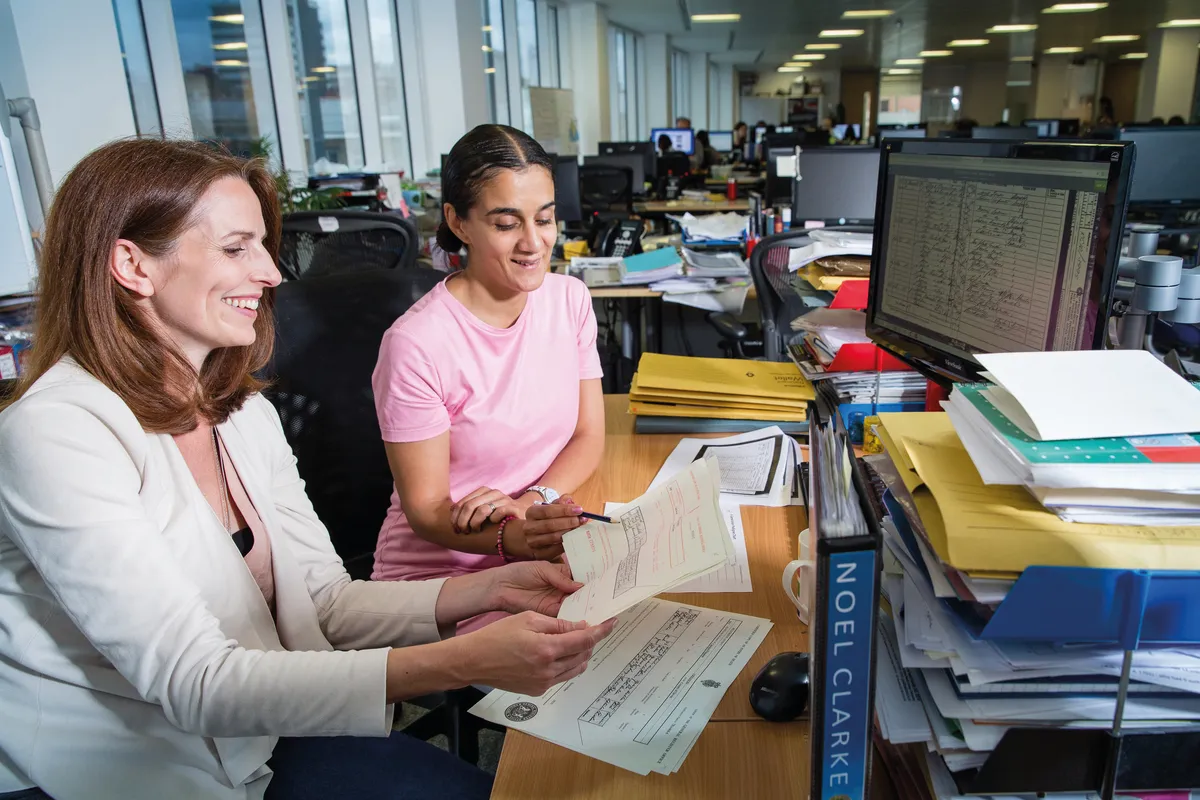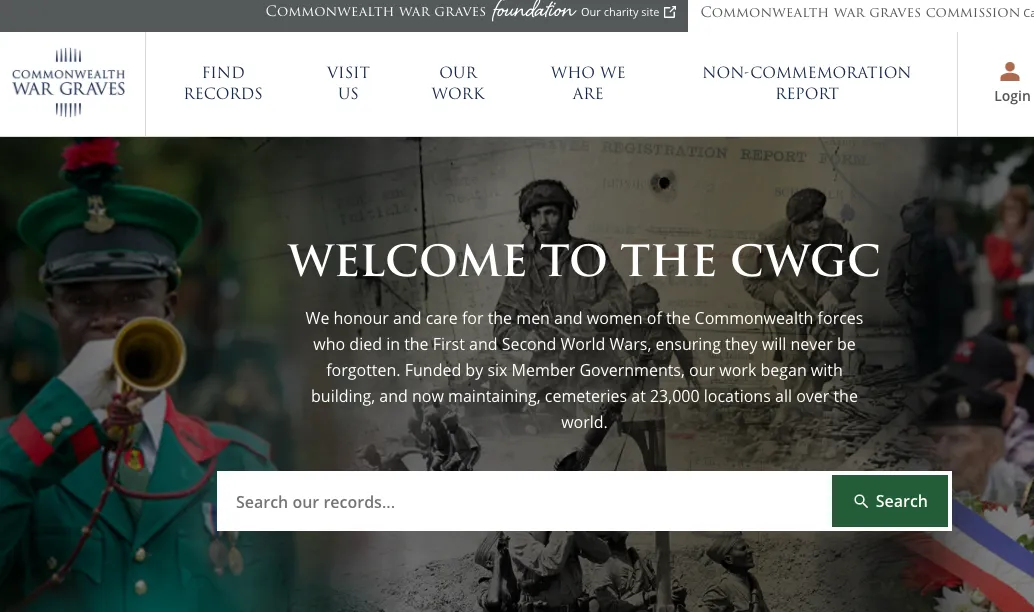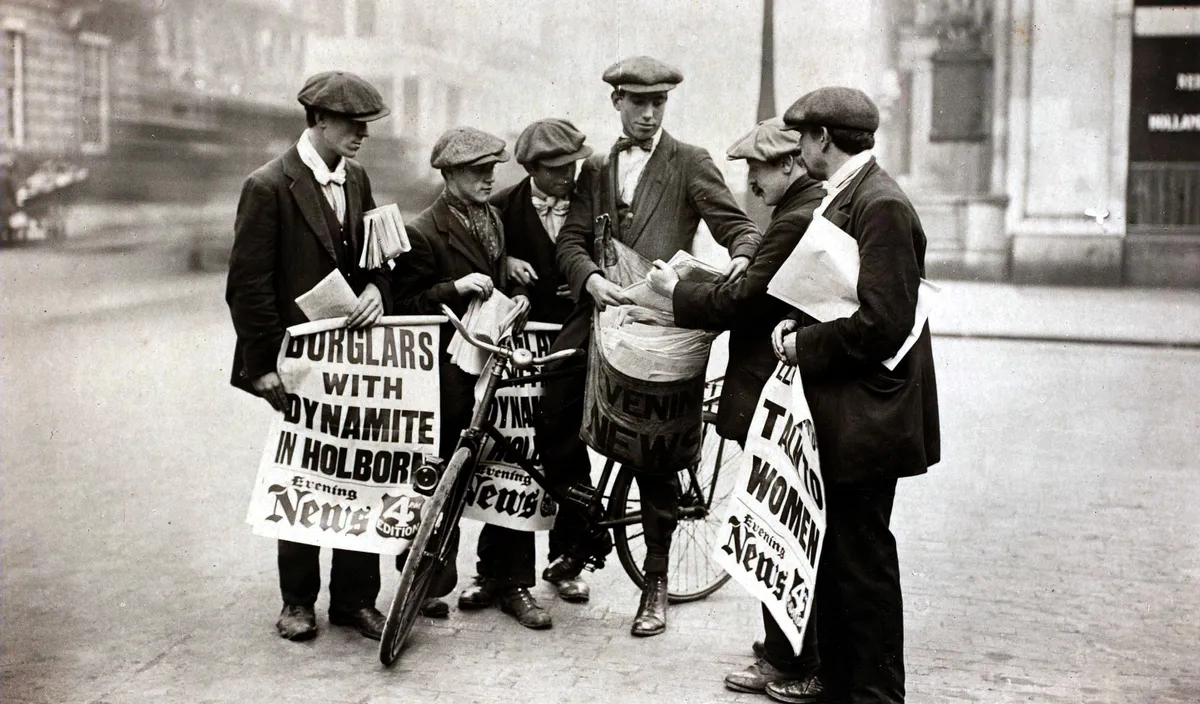We always get so excited here at Who Do You Think You Are? Magazine when a new series of our favourite TV programme approaches. Which celebrities will be featured? What stories will unfold? Since 2004, Who Do You Think You Are? has inspired a generation of viewers to uncover their own family history. The lead genealogists for Who Do You Think You Are?, Sara Khan and Laura Berry, have both worked on the programme for over 10 years now on and off. We caught up with Laura and Sara to ask them if they could share some advice for new entrants to this wonderful hobby. I began by asking what their first steps are when researching a new celebrity.
“The first thing we do is that one or more of us will go with someone from the production team to visit the celebrity and find out what they already know about their family history, and ask them who else in the family we need to talk to,” says Laura.
“We also ask the celebrity to talk about their motivations and interests, because it’s really important that they are fully engaged in the process,” Sara adds.
Although Sara and Laura have years of experience between them, they know all too well what it’s like to get stuck. “If you ever need some advice, it’s always worth posting a question on Who Do You Think You Are? Magazine’s Facebook group,” Laura says. “The genealogy community is full of friendly people willing to offer support and share ideas.”
And Sara has warm words of encouragement for anyone starting out. “Well done for beginning this fascinating journey with all of its twists and turns. You will need to be patient and persistent, but your hard work will pay off!”
How do the makers of Who Do You Think You Are? research celebrities' family trees?
1. Start with the basics

After the initial meeting with a celebrity, birth, marriage and death records are ordered for the immediate family. “This helps us get back to the 1911 census, but it’s also good to check that people have their facts right,” says Laura. “Family stories are usually quite accurate for recent family history, but there are sometimes discrepancies between what people tell us and what’s actually on the record.” Surely the cost of buying all of the birth, marriage and death certificates can add up? “There are ways to save money if you’re on a budget. Once we’ve located a marriage on the indexes we will always check to see if the actual registers have been digitised, because the church record has the same information as the General Register Office record.”
Birth, marriage and death certificates can be ordered from the GRO as well as direct from local register offices, although that is usually a more complicated process. A certificate through the post will cost £11 but, for births registered between 1837 and 1920 and deaths registered between 1837 and 1957, you can order a PDF of the record for just £7. Civil registration didn’t start in Scotland until 1855, but all records can be ordered online via ScotlandsPeople.
2. Find family in the census
“Census records form the backbone of our research,” says Sara. Not only do they give you a snapshot of your ancestors at home, but they also provide information such as birthplace and age that will help you search for birth records, and occupations that can help confirm marriage records and add to your family story. You can access census records online, and most of your UK ancestors between 1841 and 1911 can be found in them.
3. Build a family archive
Who Do You Think You Are? researchers visit relations who the celebrity has mentioned, and bring scanners with them so that they can scan old photographs and family documents. “They build up a family archive that we can all refer to at any time,” says Laura. The researchers type up their interviews, which are also stored on the shared server. Collecting photographs and interviewing older members of the family are all important parts of family history. Be sure to ask who is depicted in photographs, and write names with a soft pencil on the back of photographs or attach names to a digital copy.
4. Collaborate with others
A common misconception among viewers is that Who Do You Think You Are? researchers get access to records that aren’t available to ordinary family historians. Both Sara and Laura shake their heads and smile. “We’re just able to call on a lot of researchers,” says Laura. “Anyone starting their own tree would benefit from sharing the project with someone else. If I can’t find someone, I’ll ask Sara to look too. She has a different way of searching, so might find them.”
A common misconception among viewers is that Who Do You Think You Are? researchers get access to records that aren’t available to ordinary family historians
You may find other people researching the same ancestors via family history websites such as Ancestry and MyHeritage that let you piggyback on other people’s research. However, this can be risky.
The researchers at Who Do You Think You Are? do sometimes look at online trees, but they are very careful to check any facts that they find. “We mostly use them to discover descendants of a particular ancestor to see if they have any family photographs, records or family stories,” says Laura. It’s these sorts of encounters that lead to some of the letters and photographs we see on screen. “We do a lot of researching forward. That’s why we research siblings, especially for more recent family, because they can lead to living relatives who may hold some of the family archive,” says Sara.
5. Go beyond the basic websites

People often start their tree by taking out a subscription to a commercial family history website. Sites such as Ancestry and Findmypast offer a vast number of records, as well as simple family tree builders so you can easily attach new discoveries and watch your tree grow.
FamilySearch is also a popular option and offers free access to millions of records from across the globe in addition to a shared, collaborative tree. “I like FreeBMD too,” says Laura, “even though other sites have the same indexes, because of the way it lays out its search results. I also like the census search on TheGenealogist.”
Laura recommends looking beyond the main websites as well. “We always check out the websites of local family history societies and local archives, because you never know what indexes they may have,” she says. “During lockdown I did some work on my own tree, and found an index of memorial inscriptions on a church’s website. It was full of the names of my family, and these records aren’t available anywhere else online.”
Specialist websites are also a great help. “When we are researching military stories, I will use the Commonwealth War Graves Commission’s site,” says Sara. The First World War-themed The Long, Long Trail and The Workhouse are brilliant resources too.
6. Visit archives
Although many records are available online, there’s still a wealth of material that can only be accessed in archives. Sara and Laura call on researchers across the UK to pop into archives and check records for them. “I recently needed someone to check on a divorce record at The National Archives,” says Laura. “Ancestry has got a great collection online going up to 1918, but I needed to see one from the 1920s and those are only available in person at Kew.”
Sara and Laura call on researchers across the UK to pop into archives and check records for them
Luckily, more and more archives are cataloguing their collections at record/name level. This makes it much easier for family historians to find out if an archive holds relevant material. And you can order copies of documents from most archives, which may save you time and money compared with visiting in person. If a branch of your family came from Suffolk, for example, then you can search Suffolk Archives’ website with a surname or full name. Some records have been fully transcribed by volunteers, others will have enough information in the catalogue to give you an idea as to whether the record is likely to relate to your family.
7. Check newspapers

There are many great records out there for family historians, but for Sara there’s one that beats them all. “I love old newspapers,” she reveals. “They provide so many of the fascinating stories that we cover, and the number that have been digitised is phenomenal – and it just keeps growing.” Their main source is the British Library collection available via Findmypast for ‘Pro’ subscribers or at the British Newspaper Archive. But newspapers aren’t just used to uncover stories. “More and more I’m turning to newspapers to verify other pieces of information,” says Laura. “If I have a record that I’m not sure belongs to the right family, I can often find references in newspapers that will confirm it.”
8. Order wills or testaments
Another favourite record set for Sara is wills. “They are often rather dry, but sometimes you get the kernel of some family gossip and they can be really sweet.” Wills proved after 1858 can be ordered for just £1.50 whereas earlier wills are kept in diocesan archives, usually at local record offices (only a few are digitised). Wills proved by the Prerogative Court of Canterbury can be viewed on The National Archives’ website and the main subscription sites. Far fewer people left wills (or testaments) in Scotland, but they are held centrally and can be searched for free on ScotlandsPeople. The search results should include enough details to decide if a testament is your ancestor’s before you pay to see the record.
9. Try a DNA test
Although you may not see celebrities taking a DNA test, DNA is increasingly important to Who Do You Think You Are?, especially when stories go overseas. “Because records may not be as readily available as they are over here, or they are not as detailed, it’s helpful to build a wider tree and then use DNA to make sure we have got the right line,” says Laura. “I would recommend getting older generations to take a test as well, because you will all get different results which will help flesh out your story.”








